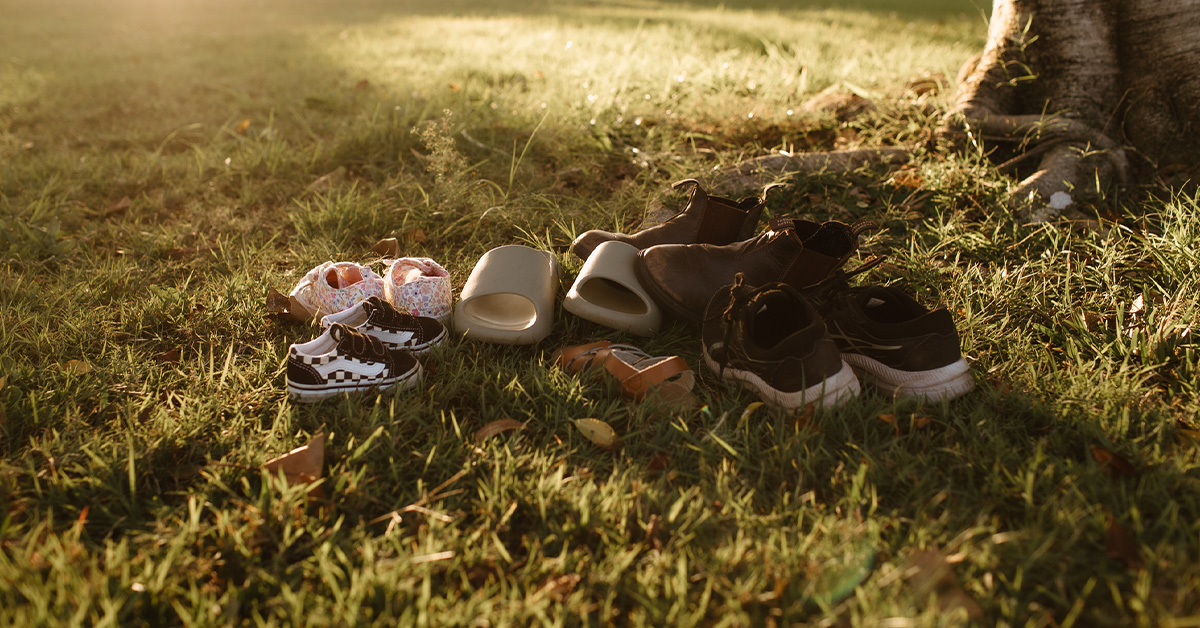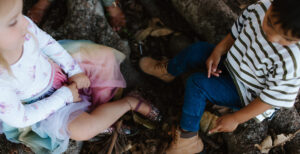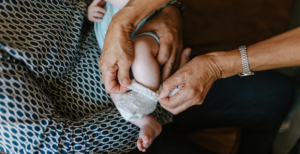Relational trauma & the healing power of relationship
Understanding of some of the science around the brain, trauma, and the power of relationship for healing, helps us shift our approach to children who have been impacted by relational trauma (or complex developmental trauma).
Trauma
The term trauma is being used more frequently and often in unclear ways. Trauma is not an event (e.g. physical assault, sexual abuse, neglect) but rather the impact an event has on us. If it overwhelms our usual ability to cope, then it can be extremely stressful and even life-threatening and leads to trauma, which impacts the whole person. Growing up in environments that expose a child to abuse or neglect rewires their brain and body and has deep effects, physically, mentally and emotionally.
‘Simple’ trauma occurs from a one off-discrete event such as a car accident or natural disaster.
‘Complex’ trauma occurs within a significant relationship, like that between a child and a caregiver. It occurs after one or many significant experiences that cause a child to feel that their life is threatened due to the actions or inactions of their caregiver(s).
Trauma can result in a child’s stress response systems being sensitised, which can impact the child’s development. It can also impact behaviour, as a child may develop adaptive responses to survive a situation, however when they’re removed from that situation these responses become maladaptive. Trauma can be the source of challenging behaviours, which are a child’s way of communicating hidden or unspoken needs. To help understand this, we need to understand a little bit about how the brain works.
Trauma and the brain
The ‘Hand Model of the Brain’ is a very useful concept from the work of Daniel Siegel and Tina Bryson (Siegel & Bryson, 2012).
Watch on YouTube: Dr. Dan Siegel’s Hand Model of the Brain or visit his website for more resources.
To make a hand model of the brain:
- Make a fist with your thumb tucked under your four fingers.
- Your fingers represent your Pre-frontal Cortex, the ‘executive centre’ that handles reasoning, decision-making and control of emotions. This can be thought of your ‘Upstairs brain’ or ‘thinking brain’.
- Your thumb represents the Limbic region, including your Hippocampus and Amygdala which is emotional, impulsive, and where ‘big feelings’ come from.
- Below that is the Brain Stem, your ‘survival brain’ responsible for keeping you alive and keeping you safe (the fight, flight or freeze response come from here).
- Together, these can be thought of as your ‘Downstairs brain’.
When danger, fear, loss of control, unknown situations, or ‘big feelings’ arise, this overwhelms your Amygdala and your Pre-frontal Cortex goes offline; you ‘flip your lid’.
The ‘upstairs brain’ is no longer able to monitor the ‘downstairs brain’ and help to calm strong emotions and reactions; the stairs are blocked. Your Amygdala does all the talking and the focus is on fight, flight, freeze for safety and no higher-level thinking or logical decision-making can happen.
When this happens, your brain needs a break to reconnect (It is good to remember that while a child becoming dysregulated might be challenging for their caregiver, it is even more frightening to them).
Children who have been impacted by trauma and who have experienced things that have caused them to feel unsafe, or a high level of stress, are in their ‘downstairs brain’ more often. It is harder for them to stay internally regulated. ‘Fear mode’ easily takes over. They are on high alert, their resting heart rate is faster, and they take more breaths per minute in their sleep. They live in this hot zone of survival mode most of the time.
Our brain and body were not designed to stay in this mode for long. The brains of children who have experienced trauma look physically different to those of children who were raised in safe and secure environments – the Amygdala is around two times the size in a kid from hard places than in a brain that has no trauma history.
Lacking coping strategies, children are reacting to their internal and external experience of their environment, seeking safety in a world that they have experienced as frightening.
A child may have difficulty controlling aggression because they were exposed to violence early in life and this became their adaptive automatic/involuntary response for dealing with conflict or anxiety. Examples of a child looking to their own inner resources to have their needs met because they didn’t experience felt safety from a caregiver consistently could be a seven-year-old who dresses, acts like, and has the preoccupations of an adolescent, or a baby who gets hurt but doesn’t seek comfort from a caregiver, instead comforting or soothing themselves.
Watch more on YouTube: Toxic stress and the brain TBRI® Animated
Attachment
‘Attachment’ refers to the emotional and physical bond and sense of felt safety established between a child and one primary caregiver in the child’s first years of life. Attachment is hugely important for all future relationships.
Children with a secure attachment, who learned to rely on a caregiver to consistently meet their needs and protect them, will feel safe to explore the world knowing there is a safe base to return to. In contrast, insecure attachment can lead to mistrust of others, a lack of social skills and challenges forming relationships.
Disorganised attachment occurs when a child is anxious of the caregiver they seek security from. When a child doesn’t experience felt safety and have their needs met, but rather experiences pain or hurt, it confuses a child’s ideas about love and safety. An expectation of frightening caregiving that isn’t resolved leads to a child feeling negatively towards themselves and others. They may avoid social situations and develop feelings of unworthiness and negative self-image.
Our ways of relating, which are learned early in life, are transferred to other relationships. It explains why, coming into a new relationship with a carer, a child may not view them as a source of safety. A behaviour typically seen is the ‘push-pull’ relationship, where the child needs to be close to the caregiver but they pull back, essentially expressing, “I’m scared to get close because you might hurt me but I am also scared to not be close because I need you.”
Watch more on YouTube: Attachment TBRI® Animated
The healing power of relationship
It is a myth that removing a child from abuse or neglect solves the problem. The trauma-informed understanding is that true healing happens in intentional, positive connections within predictable, safe relationships.
Carers have a special opportunity to help a child or young person build positive attachment and influence their future relationships.
Attachment-focused caregiving can create a sense of felt safety for the child or young person, help them trust in your ability to meet their needs, and provide a context within which they can learn healthy ways of relating.
Their hidden needs can be met by maintaining a nurturing, predictable environment, helping them to trust their own thinking and feeling and to regulate their emotions. With every interaction a child’s worldview is reinforced and optimism can be developed, which can help them form good relationships throughout their life. It is never too late to help create secure attachment.
Adverse Childhood Experiences (ACEs)
In the 1990’s, the largest study in the history of public health was conducted, called the Adverse Childhood Experiences Study. ‘Adverse Childhood Experiences’ or ‘ACEs’, is the term given to potentially traumatic experiences that occur in childhood (0-17 years of age) for example types of abuse, neglect, or household challenges (Felitti, et al, 1998).
ACEs have been found to have an impact on future health (physical, mental and emotional), opportunity, and the experience or perpetration of violence. While the ACEs study has provided incredibly significant findings and increased our awareness of experiences during childhood, it’s important to note that the ten adverse experiences used in the study are about correlation, not causation.
The ACEs study and other research have also identified the power of connection. A common factor in people who had high ACEs scores but were very resilient was relationships. If a child or young person has a buffering relationship with an adult for at least six months, they are more resilient.
The other good news is that ACEs are preventable, and we can all play a role in creating safe, nurturing, stable environments for children and families.
To learn more about ACEs, refer to the ACEs Toolkit from Emerging Minds, or visit the Centers for Disease Control and Prevention website here.
Keep learning
If you’re interested in exploring further, check out our Reading & Resources List.
If you’re a Children’s or Youth Ministry leader and want to build your teams’ understanding of a trauma-informed approach, you might be interested in our free Trauma-informed Training.
References:
Siegel, D. J. & Bryson, T. P. (2012) The Whole-Brain Child: 12 revolutionary strategies to nurture your child’s mind, survive everyday parenting struggles, and help your family thrive. Scribe Publications, Carlton North, Australia.
Felitti, V. J., Anda, R. F., Nordenberg, D., Williamson, D. F., Spitz, A. M., Edwards, V., Koss, M. P., & Marks, J. S. (1998). Relationship of childhood abuse and household dysfunction to many of the leading causes of death in adults: The Adverse Childhood Experiences (ACE) Study. American Journal of Preventive Medicine, 14(4), 245–258. https://doi.org/10.1016/S0749-3797(98)00017-8








